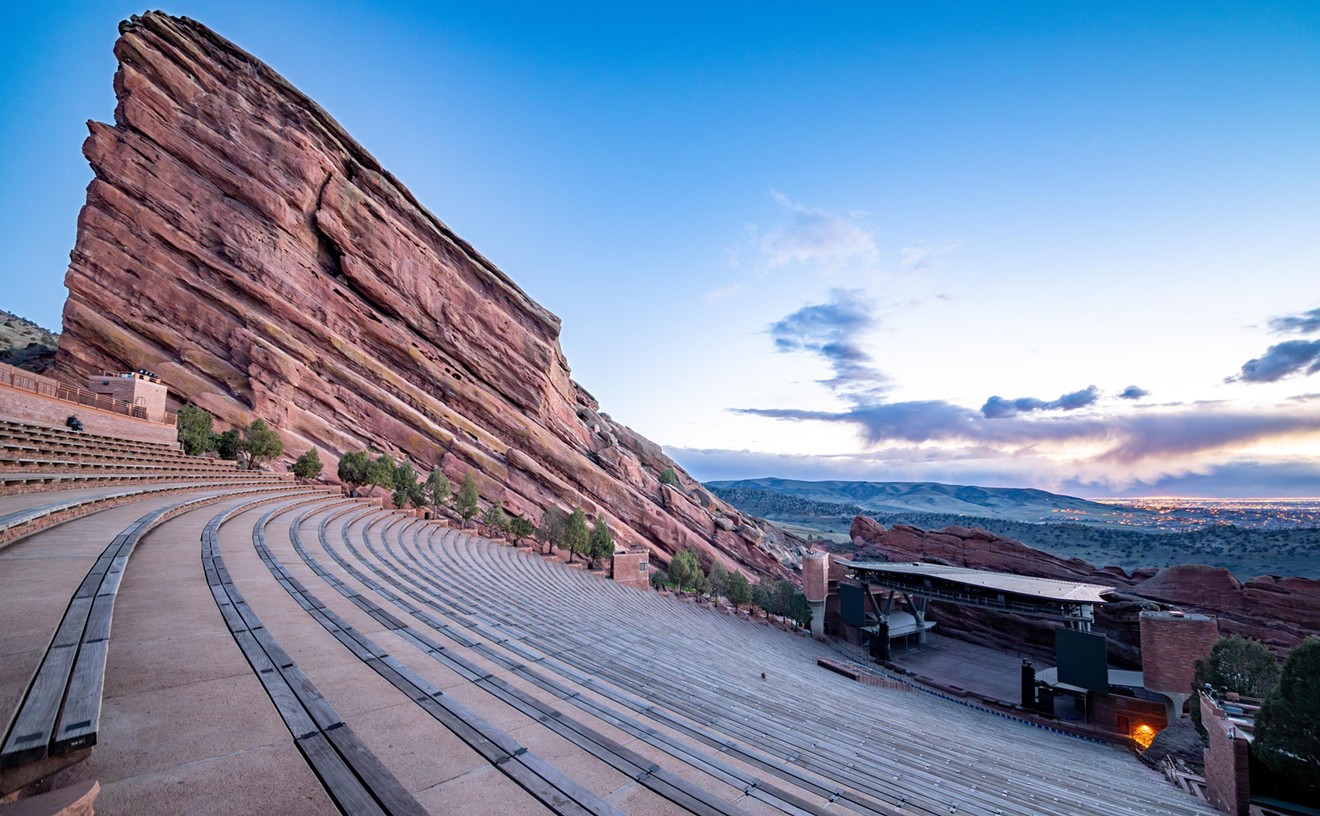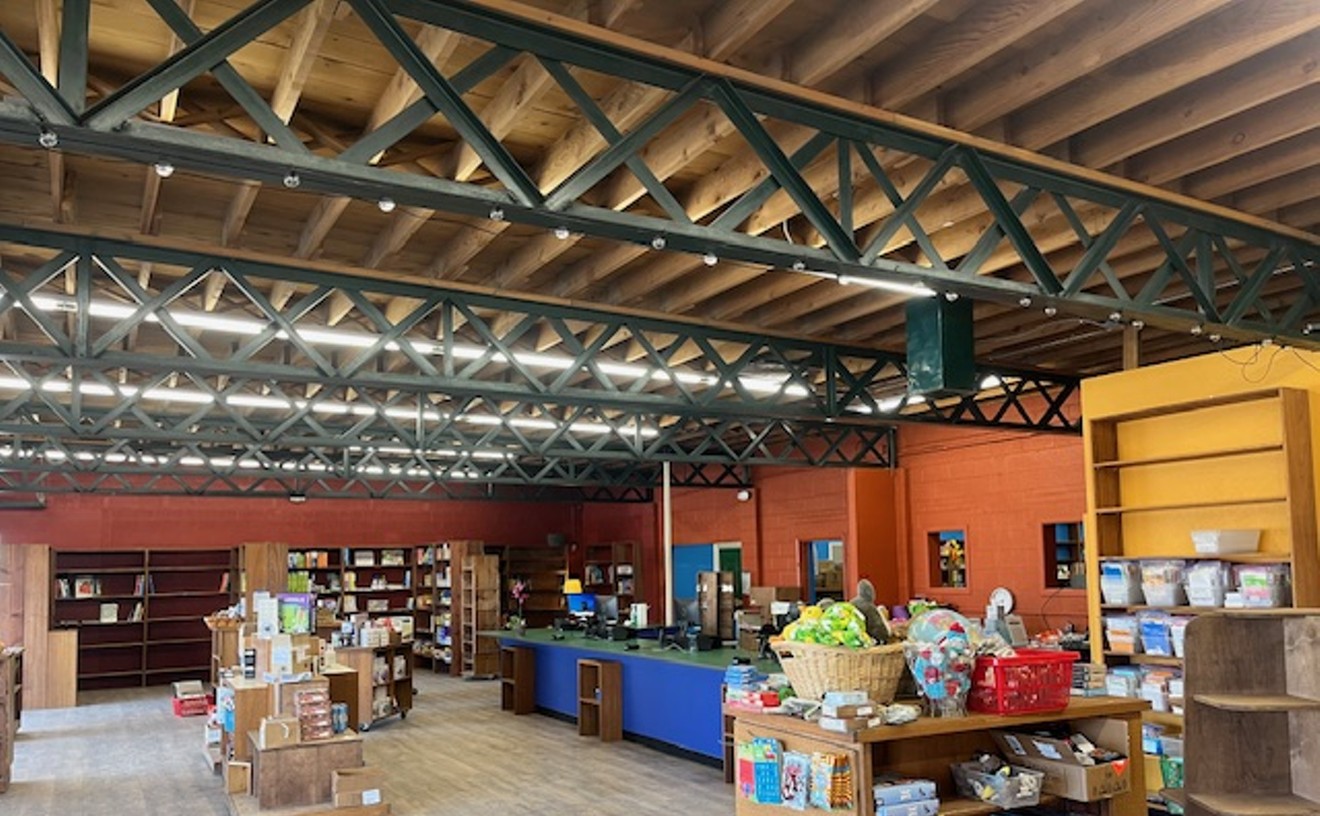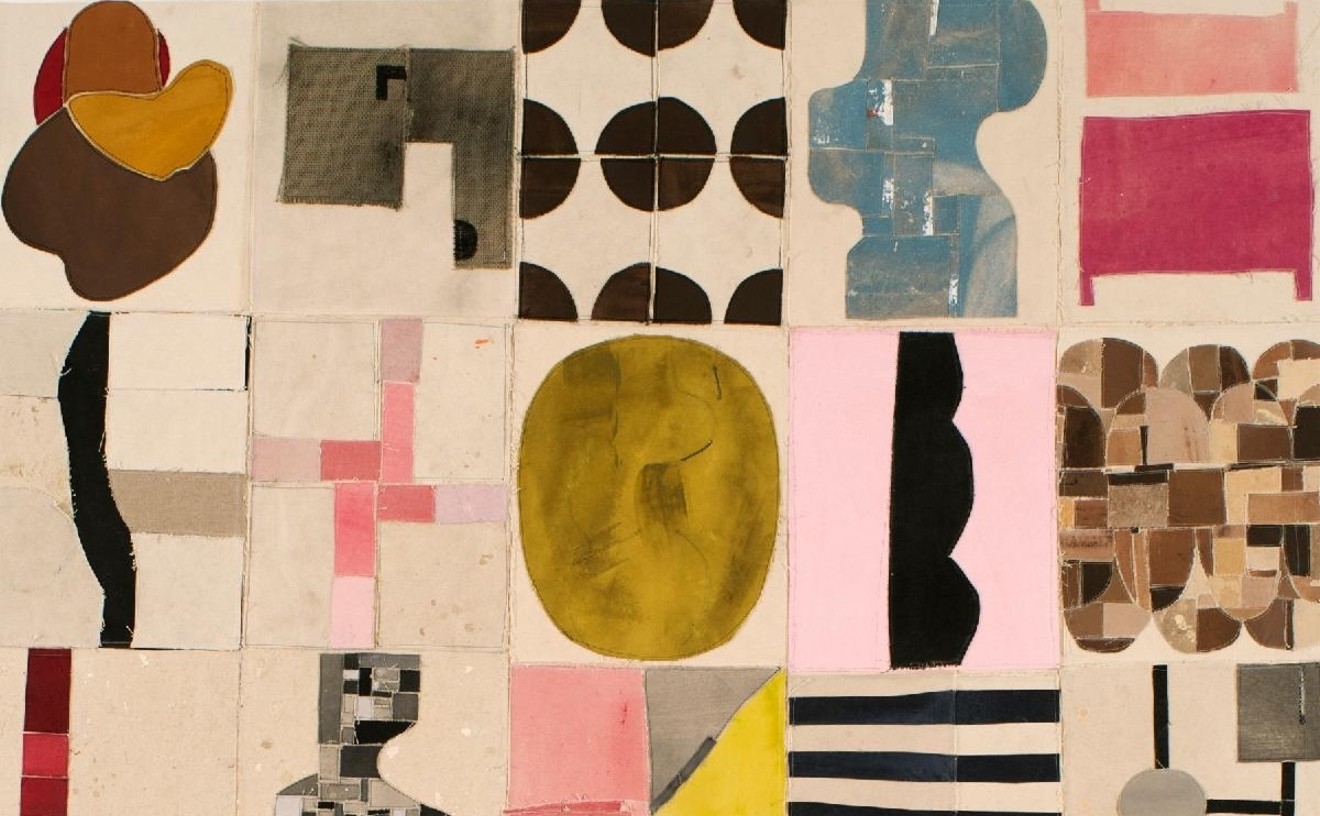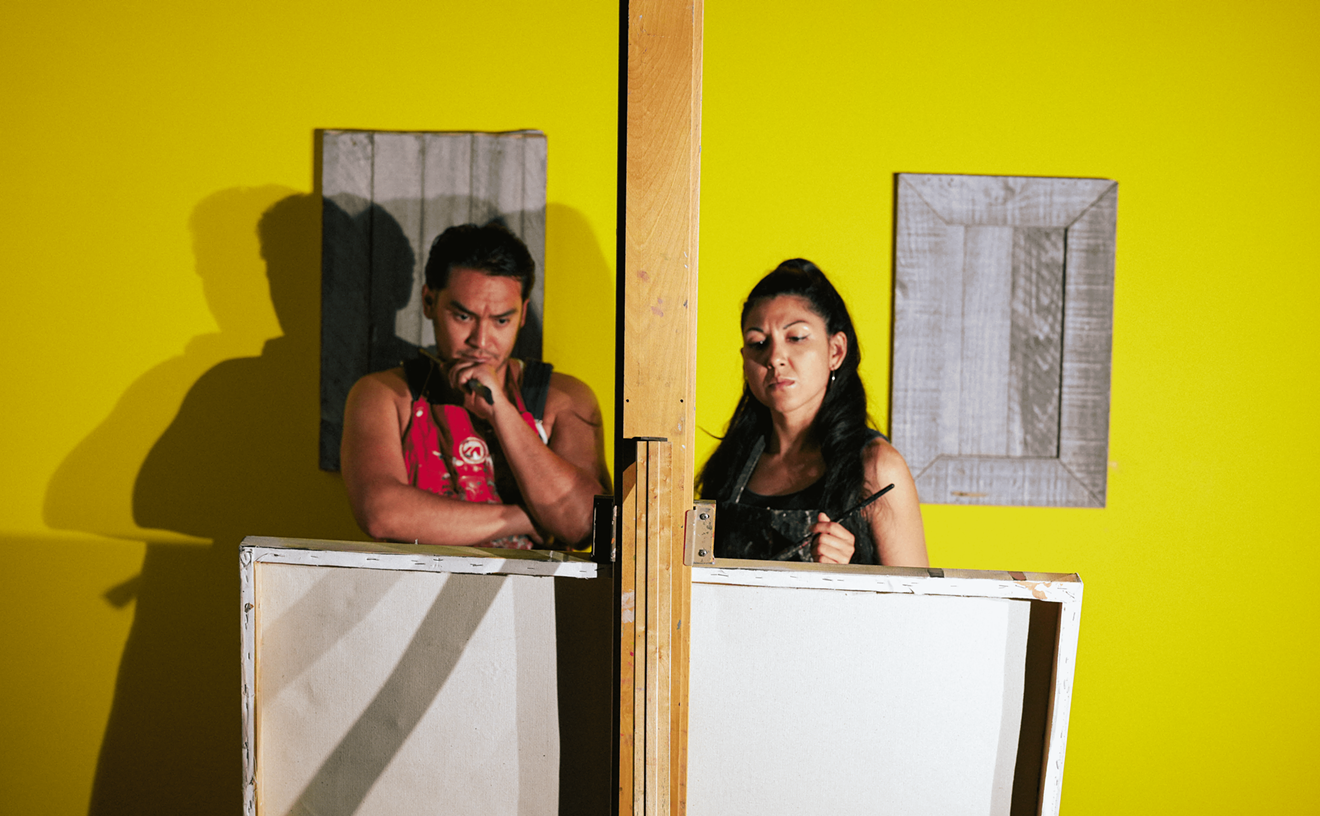I can't tell you how many shows I've seen at Robischon since I first came across it in the '80s, not long after I moved here, but I can say that the best shows I've seen there could be favorably compared to anything else I've ever encountered in the local art world.
It all started in 1976 (sticklers for math will notice that this is technically 31 years ago), when Jim Robischon opened his first venue, Blue Door II, out on Parker Road. The Roman numerals referred to his father's decorative-arts business, Blue Door Gallery, which was open from 1961 to the early 1980s.
In 1982, Jim decided to move into central Denver, and the following year, he opened in a space he renovated on Park Avenue, renaming the gallery Robischon. Encouraged by the creation of the Lower Downtown Historic District, Jim moved the venue to its current location on Wazee Street in 1989. In the early '90s, Robischon was the centerpiece of a full-blown arts district that featured numerous galleries, all within a block or two. In 1995, Coors Field opened and the sports-bar era entered LoDo, forcing most of Robischon's art-selling neighbors to decamp.
I was never in Blue Door II -- it came and went before I moved to town -- but I was in the Park Avenue Robischon a couple of times. In truth, though, I really started visiting after the gallery moved to LoDo.
In 1985, Jim started dating Jennifer Doran, who was originally from Seattle, and they married in 1986. Jennifer was a Robischon customer when they met, and her extensive art background paired nicely with Jim's. Her unerring eye for installation has allowed Robischon to hang a cavalcade of beautifully installed shows over the years.
To celebrate the longevity of the business, the gallery has mounted two special shows. In the pair of rooms up front and in the center space to the right is Decades, featuring some of the blue-chip artists Robischon represents. In the center space to the left and in the Viewing Room in the back is 30x30, an exhibit dominated by artists from our region.
The ten internationally renowned artists in Decades were chosen because each had their Denver debut at Robischon. As you might expect, this is a gorgeous group exhibition that could be at home at the Denver Art Museum -- or any museum, for that matter. In fact, some of the artists in Decades also have pieces on view at the DAM, including Manuel Neri, whose "Figure With Crossed Legs" starts off the show. The sculpture of a life-sized standing woman is bronze with a Lunalac patina, which produces the white surface that looks like plaster. Neri, a California artist who came out of the funk movement of the 1960s, has developed a kind of contemporary neo-classicism, a sensibility that is shown off in spades in "Figure." The dignified approach is doubtless the product of his repeated working trips to Italy.
Across and to the right of the Neri is a small neo-pop sculpture with a depiction of a baby sitting atop a hamburger. "Welcome! Welcome!" is made of shiny red resin by Chinese artists the Luo Brothers, whose stock in trade is recording the clash of Chinese and Western cultures in their whimsical sculptures. The contrast between Neri's evocation of European antiquity and the Luos' comment on our own times makes for a subtle dialectic.
Judy Pfaff, best known for her all-encompassing installations, has been the subject of several shows at Robischon. Pfaff plays a major role in Decades, with almost a dozen mixed-media works on view. These pieces, related to her "Buckets of Rain" installation, are crammed with organic abstract forms, which often take the shape of plants and flowers. Because most of the artists in Decades are represented by only one or two works, this in-depth selection creates a mini Pfaff solo within the larger show.
On the other side of the Neri is a group of important non-objective works. On the floor is one of Benar Venet's fabulous rusted-steel sculptures, titled "219° Arc." For this piece, which is related to his "Indeterminate Line" in front of the Colorado Convention Center, Venet joined metal arcs so that the rounded ends rest on the ground. It's fabulous.
The severity and simplicity of the Venet is perfect with the two stark lithographs by the great Richard Serra. These prints are essentially black fields on white paper, yet Serra somehow communicates the idea that the fields are curved, a three-dimensional illusion that's no surprise coming from an artist best known for sculpture. Equally straightforward is the monumental "Black Cathedral," a small-run color lithograph by the late Robert Motherwell, a key player in abstract expressionism. Robischon is one of only a handful of galleries in the world that represent Motherwell's estate.
The final leg of the show, in the center space, includes two presentation pieces for Christo and Jeanne-Claude's proposed "Over the River," for which the duo suggests covering a part of the Arkansas River in southern Colorado with a synthetic canvas roof. The mixed-media works combine drafting and photo-based elements and are meant to reveal various views of the not-yet-built installation. If all goes according to plan, "Over the River" will span the Arkansas in 2010.
Nearby are two prints by the late Luis Jimenez, who has been associated with Robischon since the '70s. Jimenez is best known around here for a piece that isn't: "Denver Mustang," a monumental fiberglass depiction of a rearing horse, mane flying in the wind, nostrils flaring, eyes glowing red. The sculpture is already ten years late on its delivery date to Denver International Airport, and it looks like it might never be completed, since it fell on the artist last year and killed him.
Jimenez embraces essentially the same ideas in his work as the Luo Brothers do -- illustrating biculturalism -- only he was at it a generation ago. It's also similar to what Lu Fan has done in "Tang Lady," a fiberglass sculpture standing on the floor not far from one of Jimenez's prints. "Tang Lady" is essentially a life-sized reproduction of an antique Chinese figurine.
The last of the big ten in Decades is John Buck. The two Buck pieces, "Utopian Parkway" and "Hugo," are closely related; both are carved juletong wood bas-reliefs accented with acrylic paint. These panels have an architectonic character, with simplified natural shapes inserted hieratically into voids.
The second anniversary show is 30x30, which is very different from Decades but is also very good. To put it together, the gallery selected thirty artists from its stable and asked each of them to create a piece that measured thirty by thirty inches. That's right: It's actually 30x30 by thirty. That this show was possible demonstrates the good relationship the gallery has with so many of its artists -- a not-so-common situation.
The first thing you'll probably notice is the video projection on a screen suspended from the ceiling. The piece was shot through a telescope and shows the moon for fifteen-minute intervals. The video, "Faux Moon," is by Gary Emrich and is one of the best things I've seen by him. Other camera-related works include two marvelous landscapes, a pinhole photo by David Sharpe and a carbon print by Eric Paddock.
As these pieces reveal, 30x30 shows off a variety of mediums, but paintings outnumber everything else. There's a marvelous passage at the start where contemporary representational paintings by four of the best local practitioners are lined up. There's the Stephen Batura grisaille of men in a landscape; the aerial view of a mountain road by Jim Colbert; an enigmatic still life of a cluttered tabletop by Jerry Kunkel; and finally, the even more enigmatic scene by Wes Hempel, showing a young man reading a letter in front of a photo mural of World War II-era soldiers. It's impossible to point out everything that's good in 30x30, because everything in it is. And I especially liked the way the pieces hung in single rows across the walls, reading like an installation.
In a statement acknowledging that many of the artists selected for 30x30 are from the area, Robischon and Doran expressed their gratitude to the people of Denver. But that struck me as odd: Shouldn't we be thanking them?










